What is food hygiene?
Food hygiene is the necessary conditions and measures to confirm food safety from production to consumption. Food can be contaminated anywhere during slaughter or harvesting, processing, storage, distribution, transportation, and preparation.
The WHO defines food hygiene as all the conditions and measures taken during the production, processing, storage, distribution, and preparation of food to ensure its safety, health, and suitability for human consumption.
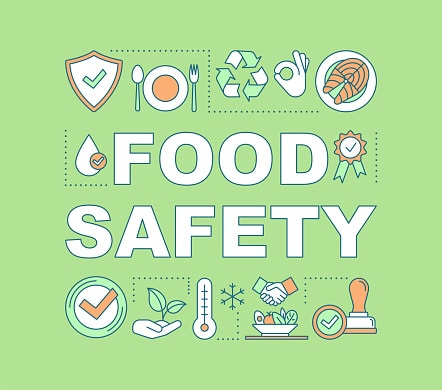
Poor food hygiene can lead to foodborne illness and death. Foodborne illnesses have been associated with inadequate storage or reheating (50%), inadequately stored food (45%), and cross-contamination (39%).
The Food and Drug Administration (FDA) and the US Department of Agriculture (USDA) need mandatory HACCP programs for fruit and meat juices as an effective approach to food safety and public health protection. Therefore, food hygiene education is very important in food safety and is an essential part of the concept of critical control point of risk analysis (HACCP).
Food hygiene and safety usually refer to contamination with “microorganisms” or “microbes”. Every day around the world, people are seriously affected by diseases caused by unhealthy and unsafe foods.
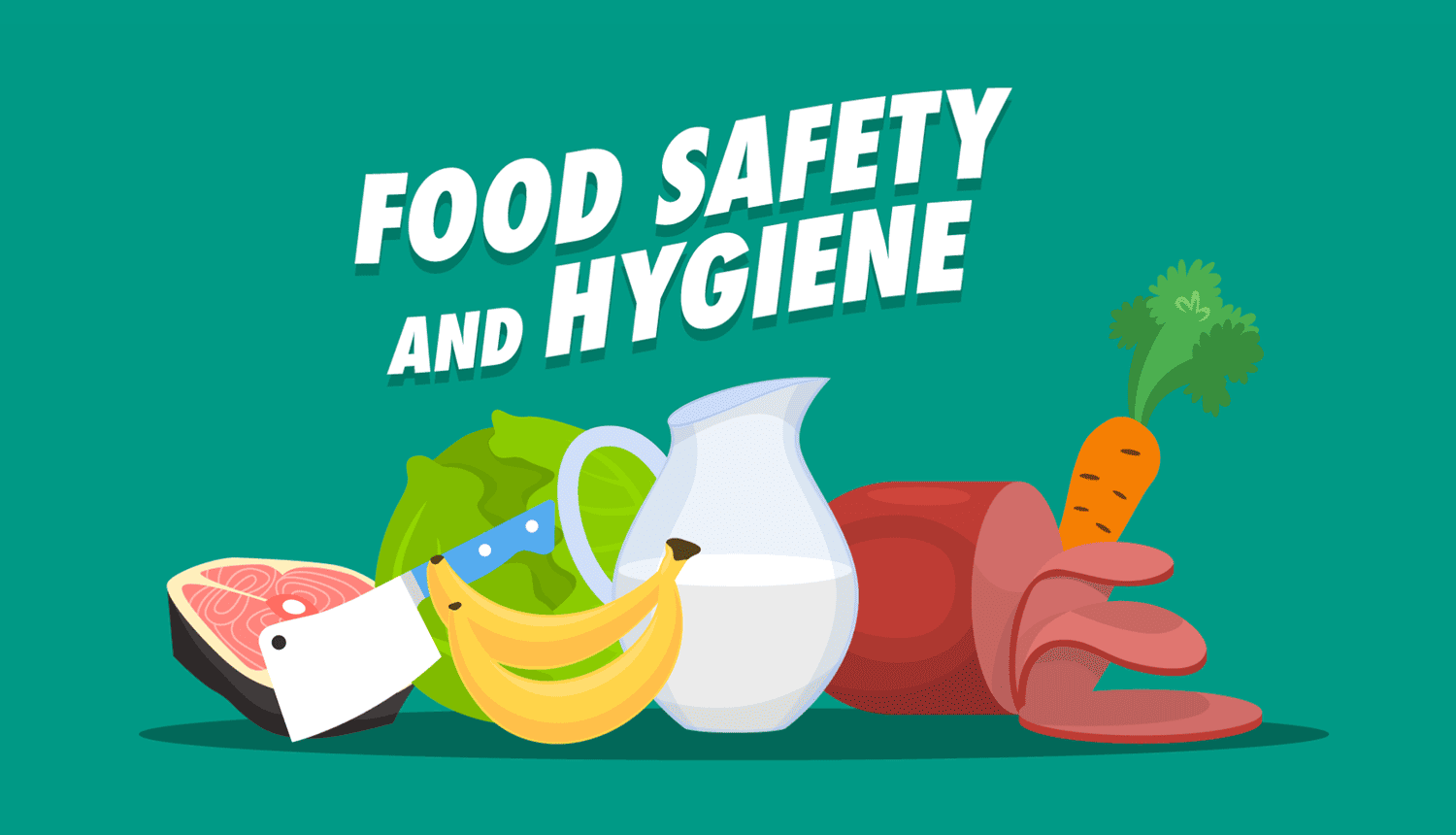
The term “food hygiene” specifically refers to measures that prevent microbial contamination of food at all points in the chain, from farms and livestock to the consumer’s table.
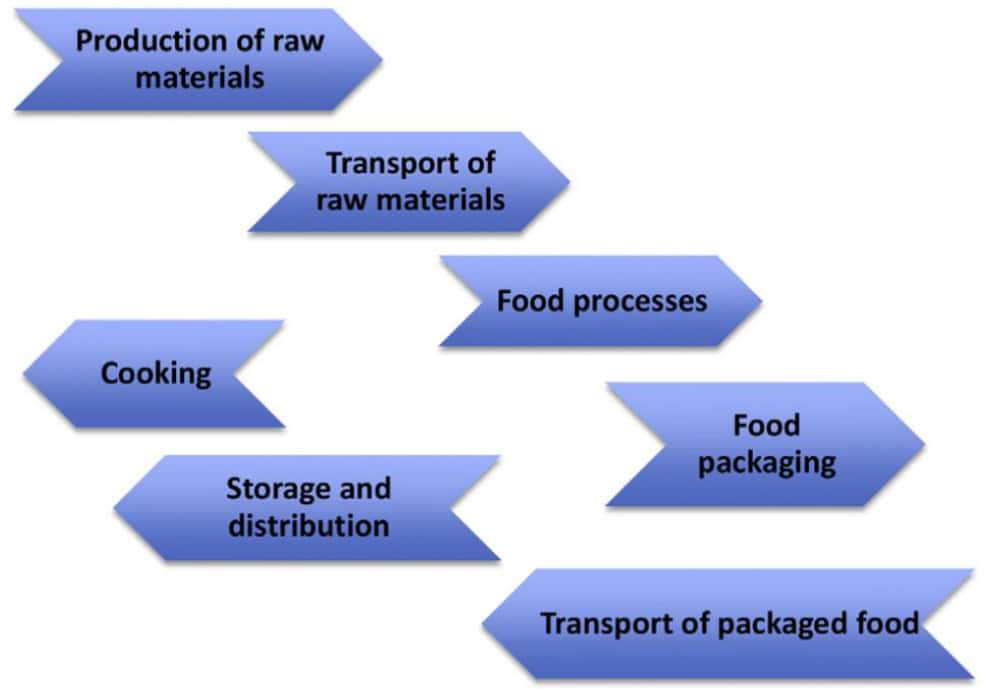
5 basic and important points regarding the importance of food hygiene
Good personal hygiene
• Do not touch food when you feel unwell.
• Wash hands thoroughly with soap and water after using the toilet, before preparing food, and after coughing and sneezing.
• Use gloves or utensils to store cooked food.
Safe materials
• Get food sources from approved sources.
• Make sure the materials used are not healthy and have not expired.
• Store materials properly at the right temperature.
Safe shipping
• Store food in clean, covered containers.
• Keep cooked / prepared food above raw food.
• Use chopping boards and utensils separately to store cooked/prepared and raw food for eating.
The correct temperature
• Defrost food safely in a chiller.
• Cook food thoroughly.
• Keep hot food warm (above 60 degrees Celsius) and cold food cold (below 5 degrees Celsius).
Clean place
• Keep food preparation surfaces and equipment clean.
• Practice proper house cleaning and follow the cleaning schedule.
• Take effective pest prevention measures.
• Practice good waste management.
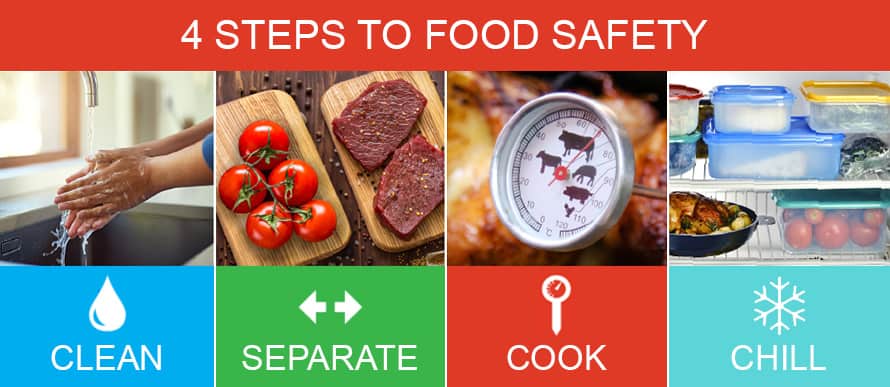
Contamination of food during its processing
The presence of unwanted materials such as dust and particles during construction and transportation is called contamination.
The term contaminant includes any unwanted substance found in the product. These contaminants affect the quality of the product or process. Food contamination, both of microbiological and chemical origin, is a major concern for consumers.
Sample purifiers, such as micro-extraction techniques that can eliminate matrix interference and centralize analyses from the sample, have been developed and proposed as powerful tools for food analysis.
But the task of identifying contaminants, whether from food production, food processing, or packaging, is still a challenge. Information on potential contaminants from each stage of food processing is essential.
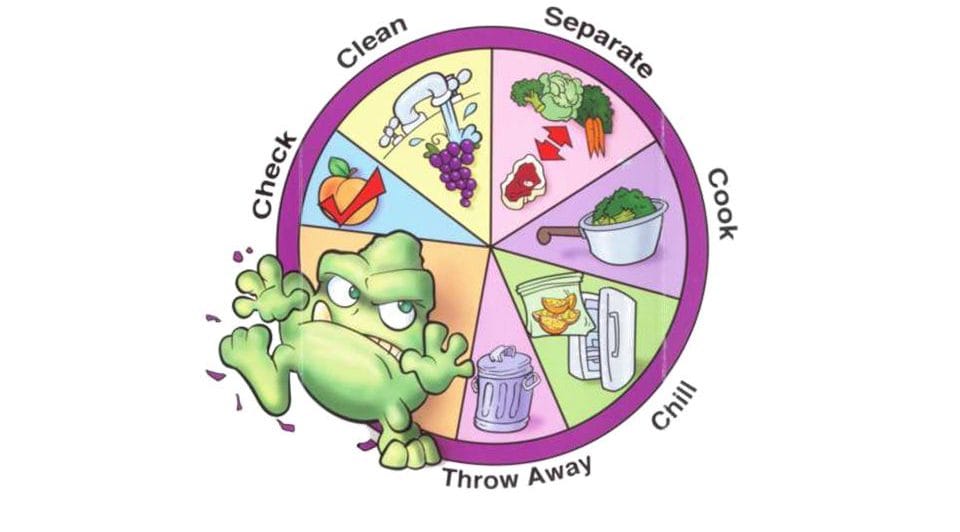
External contamination of raw food
Industrial growth, advances in the use of agricultural chemicals, and urban activities can all contribute to the pesticide residues found in fruits and vegetables. Some derivatives with adverse effects, such as metabolites of organic chlorine pesticides, have also been found in fatty foods.
Heavy metals such as cadmium, lead, mercury, and arsenic, which are known to be toxins that may be present in air, soil, and water, can be transferred to food.
Heavy metal analysis has been performed on several nutrients such as honey, spinach, potatoes, fish, and tea.
The main techniques used for heavy metal analysis are flame atomic absorption spectroscopy (FAAS), graphite furnace atomic absorption spectroscopy (GFAAS), cold vapor atomic absorption spectroscopy (CVAAS), inductively coupled plasma atomic emission spectroscopy (ICP-AES) and Plasma Mass Spectrometry (ICP-MS).
Numerous methods have been developed for the determination of antibiotic residues in foods such as meat, eggs, and milk, such as using a microbial inhibition plate test or liquid chromatography.
Contamination during transportation and the importance of food hygiene during this process
Food contamination can also occur during transportation. This could be due to the exhaust of petrol and diesel vehicles or cross-contamination of the vehicle used to transport food.
This cross-contamination can pose a serious risk to food safety. In 1999, a major disease in the European Economic Community was attributed to fungicide-contaminated pallets used to transport and store food packaging. The long-haul carrier has also been repeatedly exposed to cross-contamination from chemicals used for disinfection or other sources. A 2007 study is a good example of food contamination due to the penetration of naphthalene, methyl bromide, toluene, ethylbenzene, and orthopar xylene through a material with a high theoretical barrier.

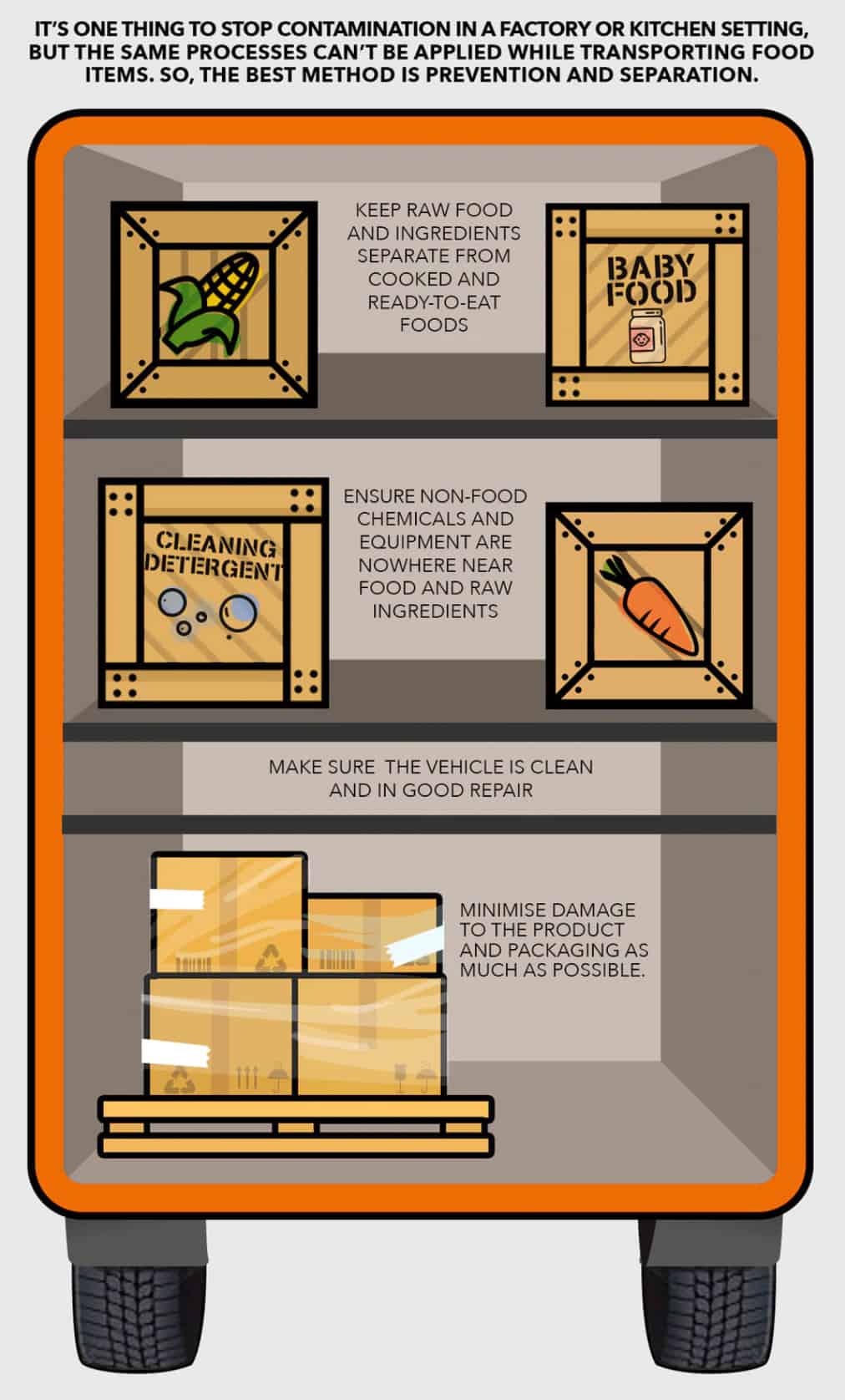
Contamination caused by cleaning processes
Cleaning and disinfection during food processing eliminates the presence of potential microorganisms and is therefore very important to reduce food contamination.
Chemicals used as cleaners or disinfectants must be suitable for food contact surfaces and must be approved by law. Products such as glass cleaners or some metal cleaners should not be used as they may leave unsafe residues.
Adding disinfectants in much higher amounts than allowed can leave some residual concentration on the treated material or food, even on processed fruits and vegetables. It is therefore important to quantify the chemicals left in the food to confirm this.
Some common surfactants are quaternary ammonium compounds such as dodecyl-trimethyl ammonium chloride and nonionic surfactants such as sterile alcohol ethoxylate. Factors affecting their removal from different surfaces of materials are washing time or water temperature.
These compounds are usually analyzed by mass chromatographic mass spectrometry.
Pollution caused by heating stages
The use of high cooking temperatures in combination with external agents can lead to the formation of toxic compounds that can have a detrimental effect on food quality and safety. Some toxic compounds (e.g., acrylamide, nitrosamines, chloropropanols, furans, or PAHs) can form in foods during processing during heating, cooking, roasting, grilling, canning, hydrolysis, and fermentation.
Frying is almost a cooking process that can act as a producer, like a wide range of toxic compounds in food. Flavors are produced from reactions of oxidized frying oil with proteins and other substances such as sulfur and nitrogen in food.
Various compounds of food are released in frying oil, which increases the color change or bad taste. The pigments in the frying oil may also be absorbed on the surface of the fried food.
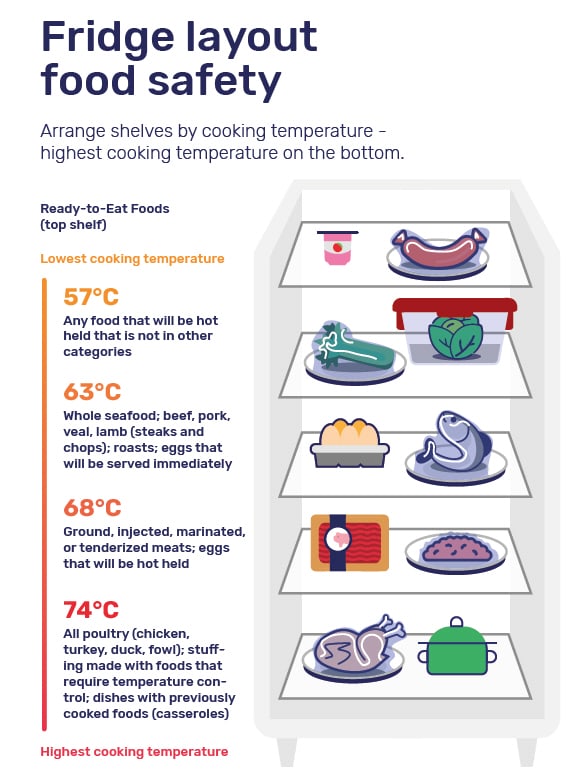
Cellulose materials are often used for sausages. Acrylamide and its precursors are also important pollutants derived from heating processes.
Some processing contaminants, such as nitrosamines, can be caused by the interaction of natural food components with food additives during heating. Dimethylamine nitrosis has been detected in some foods as a result of direct drying or roasting processes.
Nitrosamine formation during steam or boiling (which means lower temperatures of 100 ° C) is less than that formed during frying, roasting, or grilling.
They can be measured by various methods such as colorimetry and spectroscopy following gas or liquid chromatography or as a whole N-nitroso group, by measuring chemically released nitric oxide. Gas chromatography (GC) with a special thermal energy analyzer (TEA) detector is the most appropriate, sensitive, and widely used analytical method for the detection of volatile nitrosamines.
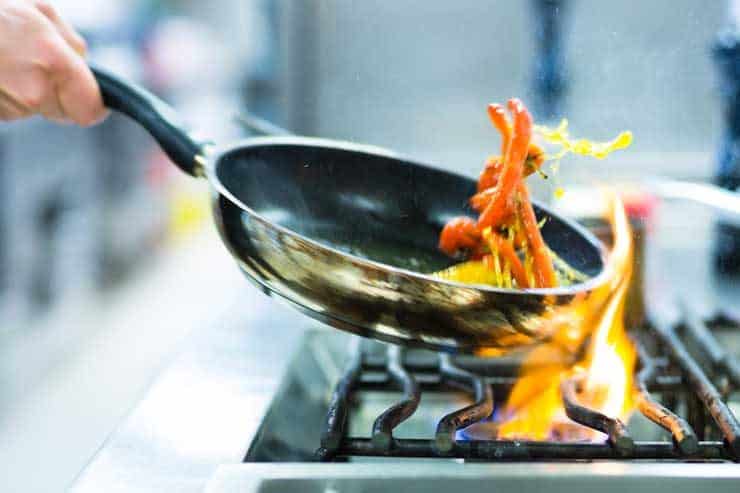
Other pollutants
Other processing contaminants generated during heating include polycyclic aromatic hydrocarbons (PAHs) in grilled and smoked products, ethyl carbamate, and other explosive products or derivatives in a variety of heat-treated foods, especially coffee and canned / glass foods.
Eruptions contribute to the bad taste of food and can be made up of a variety of precursors such as ascorbic acid, carbohydrate breakdown, amino acid degradation as well and fatty acid oxidation. Production of mutagens is much lower in the absence of fat.
Some of the mutagenic activities of frying fats are due to the nitrogen-free lipid breakdown products of nitrogen and are independent of the frying medium.
Microwave heating
Microwave heating is becoming a process that is increasingly used to heat food at home and in some industrial sectors. A common feature of microwave cooking is that food is cooked in packaging materials (packaging film, container) in the microwave.
Such microwaveable packaging materials include plastics, cardboard, and composites that, during microwave cooking, contain many of their components (e.g. chemicals, emollients, antioxidants, monomers, stabilizers, etc.) and can migrate from the package into the food.
This leads to reduced food quality and food safety. Microwaves can also increase the propagation rate, destroying migrants or polymers, or creating hotspots that increase migration to higher levels than bulk heating temperatures.

Food packaging and the importance of food hygiene in it
Food packaging provides many benefits, including physical and chemical protection, as well as better food preservation, which increases product shelf life.
Direct or indirect contact between food and packaging materials can lead to the transfer of these materials from packaging to food, in a phenomenon called migration. Immigrants can pose a health risk to their consumers if they have a toxic effect.
To protect consumers, there are strict rules in the FDA, Europe, Mercosur, Australia, Europe, as well as in many countries to prevent contaminating materials and food items in contact with them.
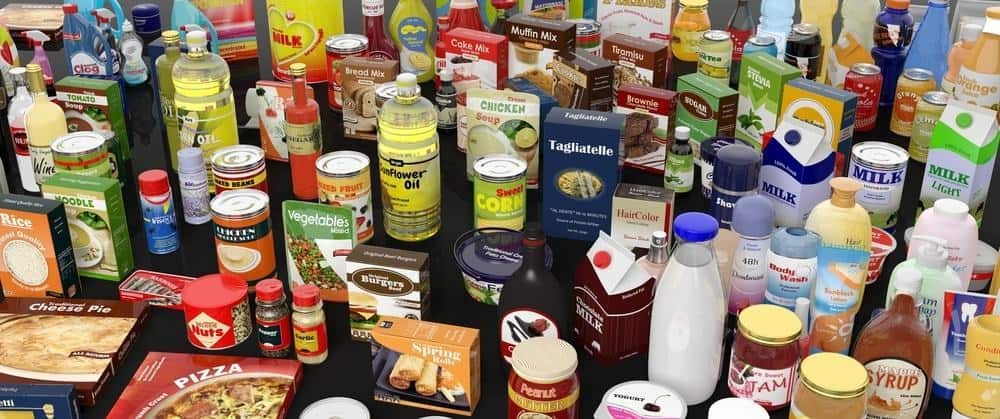
Corrosion phenomenon on the metal surface of cans
Any compound with a molecular mass of less than 1000 amu can migrate through polymer or paper layers, reach food, and dissolve in it. When metal cans are used for food packaging, the corrosion phenomenon on the metal surface of the can can cause metal ions to migrate to foods such as iron or tin.
Another common ingredient used in packaging marmalade, jams, vegetables, beans, or sauces, is glass.
In this case, the migration comes from the metal lids used to close the glass bottles. Epoxy soybean oil (ESBO) is one of the additives used as a softener in PVC and its migration to food has been reported by several authors.
Paper and cardboard are commonly used to package dry foods such as flour or sugar or products such as rice, cereals, or frozen foods.
Migration from cardboard additives or printing ink to food can be done
The most recyclable packaging materials and the use of recycled materials can contaminate food with materials such as mineral oils or softeners obtained from printing inks or adhesives.
Common polymers used in food packaging are polyethylene (PE), high-density polyethylene (HDPE), polyethylene terephthalate (PET), polyvinyl chloride (PVC), polystyrene (PS), and polycarbonate (PC).
The migration of inks has also been extensively studied, especially the migration of photo-initiators such as benzophenone (BP) or 2-isopropyl thioxanthone (ITX), which are UV-curable inks.
Plastic recycled materials are also of particular importance because they can contain chemical compounds from pre-packaged foods, materials resulting from the misuse of packaging by the consumer, or inherent contaminants from the recycling process (chemical additives).
Substances that are intentionally added to food packaging materials or unintentional materials (NIAS) can also migrate to food and can also have adverse effects
The degradation processes of the polymer itself are due to the high temperatures or high radiation energies that occur during the fabrication of the polymer. As a result of degradation processes, polymer additives can also be obtained from impurities in raw materials.
Contamination during storage and the importance of food hygiene in it
Food storage conditions are key parameters in food quality and safety. Proper storage increases the shelf life of food, which depends on the type of food, packaging, and storage conditions, especially temperature and humidity.
Organoleptic changes should not occur during food storage and therefore packaging materials used for long-term storage should have excellent inhibitory properties.
Moisture can cause some packaging materials to decompose (for example, paper degradation and metal rust). The optimum temperature range is cold to medium, between 4 and 210 degrees Celsius.
Direct sunlight on both food and packaging can accelerate contamination. As shown, depending on the barrier properties, the transfer of compounds through packaging materials will be different.
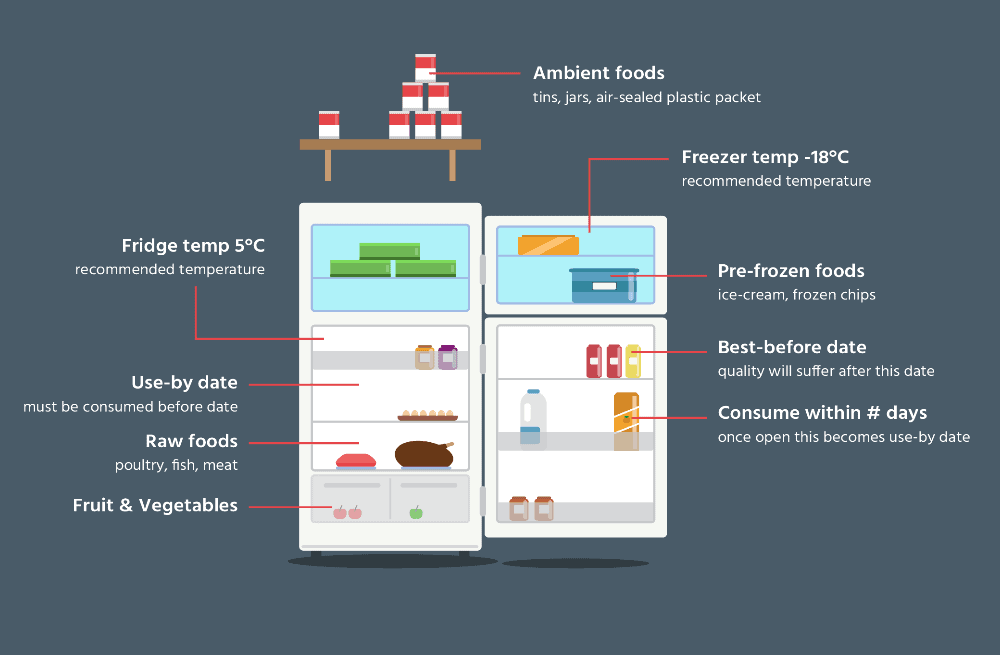


Please dont think Im just trying to copy you, but I really like the formatof this site. Could you let me know which theme are you using? Or was it custom made?
This excellent website truly has all the information I wanted about this subject and didn’t know who to ask.
Thank you for your opinion. We hope that we can always help you with the content that we put on the site.